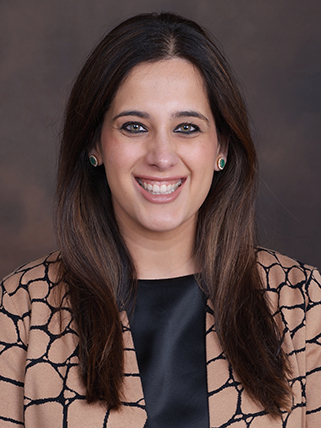 How did you become interested in education and cultural competency as a topic for your dissertation?
How did you become interested in education and cultural competency as a topic for your dissertation?
I started my career with Teach For America. My background was not in education, but in political science. I had six weeks of training, then became a teacher in Baltimore City. I was passionate about the mission statement, making a difference in the lives of kids, but I didn’t know
what it meant to be culturally competent. I didn’t know how to be my authentic self, or how to create activities that let kids see themselves in the curriculum.
As a Pakistani immigrant who grew up in a predominantly white space, I was also affected by the public school system. Now, as a mother with small children, I see the inequities are still there. That’s why I’m so passionate about this work.
Tell me about your dissertation.
I studied the intersection of racial identity and relationships in developing culturally responsive classrooms. Culturally responsive teaching is a pedagogic framework for educators to create a classroom that centers students’ interests, experiences and values. I used relational coordination as the anchor of my theoretical models, and I focused my study on Connecticut Title I schools, which have higher percentages of Black and brown students.
Two of my papers compared the experiences of white and BIPOC (Black, Indigenous and people of color) teachers with students, as well as their relationships with colleagues, administration and community members.
One finding was that white teachers said that parents and families were a barrier to student progress, rather than allies. However, BIPOC teachers viewed their students’ racial and cultural identity as assets, and they were more able to discuss how they included their students’ interests and values in classroom learning.
For me, the most interesting finding was that Black teachers had lower relational coordination with parents and community members than white teachers, which was different from my hypothesis. I thought they would have stronger relationships because of shared backgrounds or modalities of living, but that was not the case.
Another one of my papers focused on the value that Black teachers bring to their classrooms. One important attribute I saw was authenticity: bringing yourself to the work. In the study, I noticed the manner in which Black teachers talked about their experiences and journeys in public schools and the reckoning they’ve had with white supremacist culture to be powerful in connecting with their students.
What are the key recommendations from your work?
One recommendation is for principals to create professional development opportunities for teachers to learn cultural competency, and for principals to better acknowledge and affirm BIPOC expertise. Another is to develop family resource rooms, which allow parents and other family members to better engage in their students’ learning outcomes.
In all organizations, including schools, definitions are critical in diversity, equity and inclusion (DEI) efforts. How are you defining DEI work? How are you defining the impact you want to make? What are the theoretical models and strategies to anchor your work? In an organization, if you don’t define these terms, people fill in gaps based on their experience.
It’s also important to acknowledge that no one is really there yet. We are just at the starting point of this long marathon. Even the most progressive spaces that have been working in DEI for decades, if they stumble or slip up or don’t acknowledge validity of trauma, they must rebuild trust with community and employees.
Where are you working now, and how are you incorporating your research into your work today?
I got my dream role this year as DEI program manager at Curriculum Associates, an educational tech company.
My role is internal-facing and I work predominantly with HR and our talent teams to manage, facilitate and develop employer research groups for Latinx, LGBTQ, Black and Asian populations in partnership with a consulting company that works with and drives longer-term planning. We’re creating different pipelines to provide BIPOC talent a path to the company. It’s really exciting because I spent six years looking at data, talking to folks, getting their stories and narratives, and now I’m in a position where my programs can help create that type of space in the company.